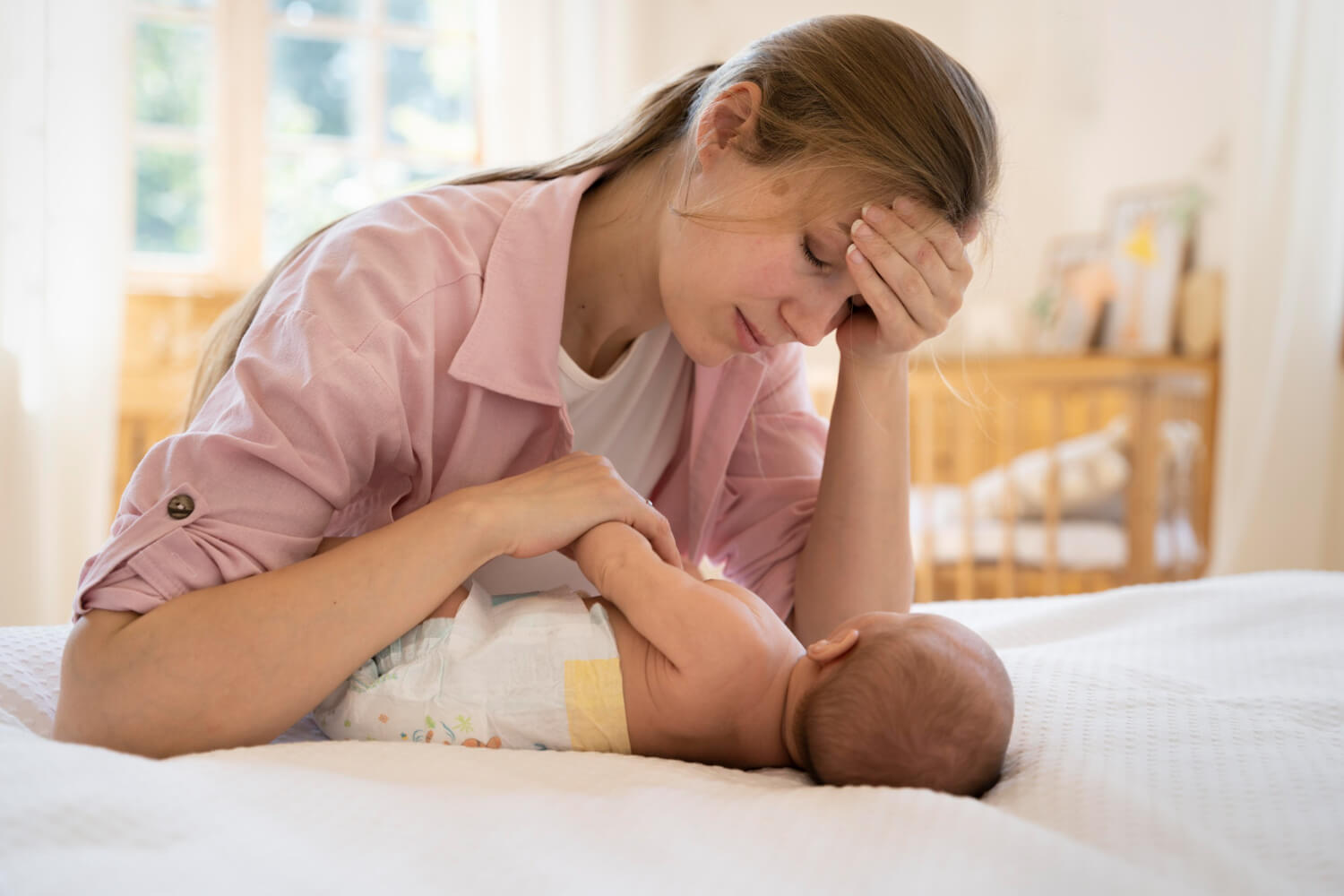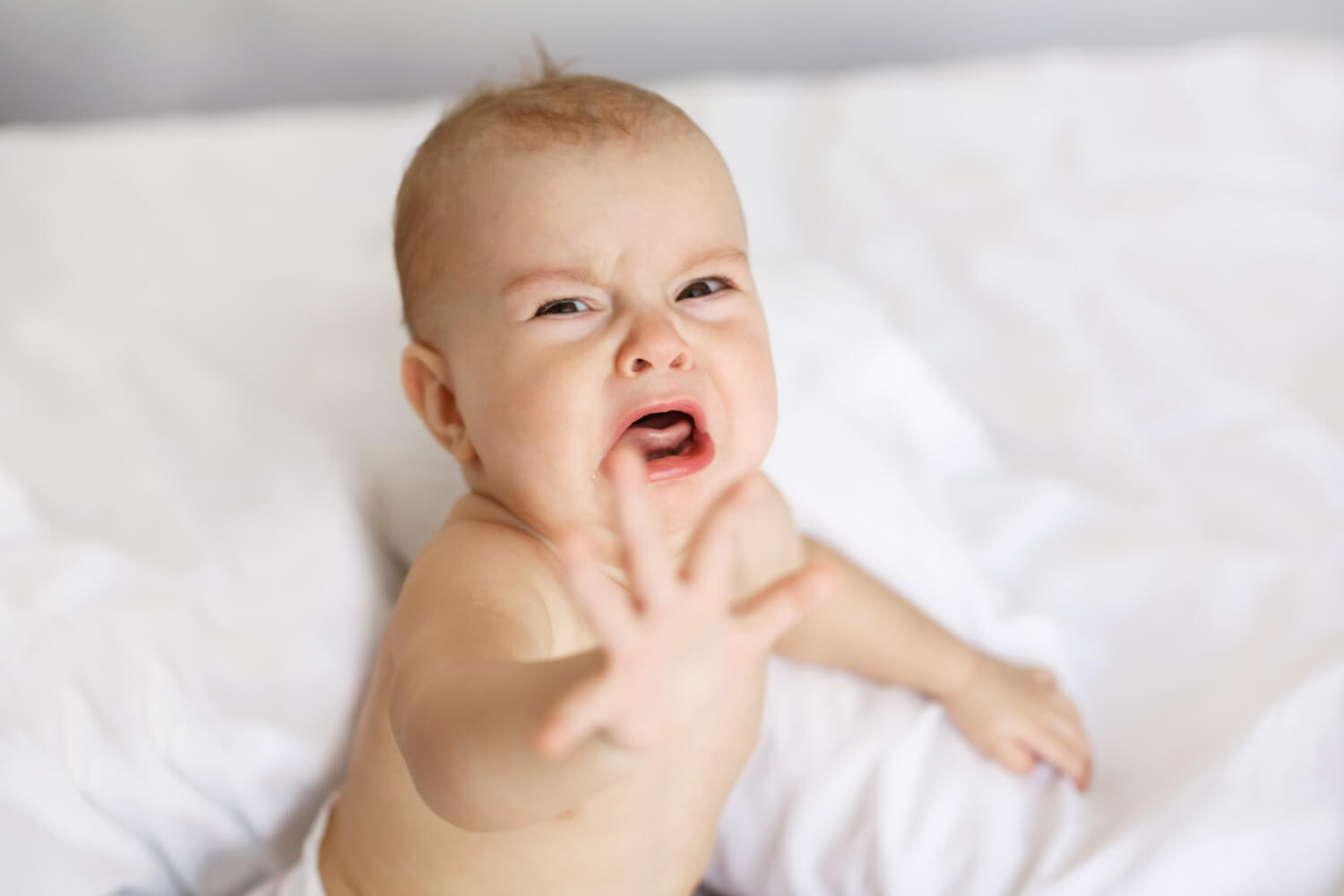Causes of Hives in Infants and When to See a Doctor


Written and verified by the dermatologist Maria del Carmen Hernandez
It’s essential to understand the causes of hives in infants, as this condition can occur in infants as well as in people of all ages. While it’s natural for parents to be concerned, it’s important to keep in mind that in most cases, hives are harmless and tend to go away on their own in a short time.
Are you interested in learning more about the causes of hives in babies and how to identify when it’s necessary to see a doctor? Keep reading for detailed and helpful information.
Why do hives occur in infants?
In infants, hives can be caused by a variety of factors, such as food allergies, viral infections, or reactions to medications. Also, these inflamed, erythematous lesions may disappear within hours, days, or even weeks.
In addition, they’re very pruritic, that is, they’re itchy and this causes discomfort for the infant.
This reaction occurs when the infant comes into contact with an organism that triggers the release of histamine, a chemical produced by the immune system and released in response to an allergic or inflammatory reaction. However, in about one-third of the cases, it’s not possible to detect the triggering cause. This is detailed by the American Academy of Pediatrics.

Allergic reactions
Hives in infants can be caused by an allergic reaction to different foods, drugs, or skin care products. In fact, babies who are allergic to breast milk or formula may develop hives after feeding.
There are also many irritating foods that can trigger an allergy. Peanuts, tree nuts, eggs, and sesame are some of them. If your baby has started taking a new medication and has developed hives, it’s important to contact the doctor immediately.
Various infectious conditions
Some viral or bacterial infections can trigger hives in infants. For example, they can be a symptom of the common cold, measles, or chickenpox. They can also be a side effect of some bacterial infections, such as strep throat.
Changes in the environment
One of the causes of hives in infants can be changes in the humidity or temperature of the environment. This may include hot and cold water, sun exposure, or excessive sweating.
It’s also relevant to note that some skin conditions, such as atopic dermatitis, may predispose infants to urticaria. Atopic disease is a chronic condition that causes dryness and itching of the skin, leading to hives if scratched too much.
Is urticaria dangerous in babies?
Although it usually resolves spontaneously in children over two years of age, medication with antihistamines can be very helpful. In contrast, hives in infants can be more difficult to treat, as most antihistamines aren’t recommended for children under 2 years of age.
The most common mild symptoms are as follows:
- Burning
- Itching
- Local edema
- Raised and colored lesions with whitish centers
These lesions can be localized or spread all over the body. The most frequent areas are the hands, face, feet, and genitals. However, they may appear in one area and disappear to appear in another.
Should you take your baby to the doctor immediately?
If your baby has hives, it’s important to seek medical attention to determine the underlying cause and get the correct treatment. Sometimes hives can become complicated, affecting more than just the baby’s skin.
Some of the more relevant symptoms include the following:
- Abdominal pain
- Vomiting
- Nausea
It’s also crucial to keep in mind that urticaria is one of the signs of a very serious condition called anaphylaxis. Although anaphylactic shock is rare in infants, it’s a severe reaction that causes breathing difficulties, swelling of the throat, and loss of consciousness, among other symptoms.
In this situation, emergency medical intervention is required.
What else should be done?
Treatment of hives in infants will depend on the underlying cause. That is, if the cause is a food allergy, dietary changes or medications may reduce the allergic reaction. According to a publication in the journal Pediatric Annals, if the cause of hives in infants isn’t obvious, additional tests, such as blood tests or allergy tests, may be ordered.

Can hives in infants be mistaken for something else?
There are other skin reactions that can manifest similarly to hives. Therefore, if your baby has an itchy skin reaction and seems uncomfortable, don’t hesitate to consult your doctor for a diagnosis, especially before administering any medication.
Hives often look like insect bites. However, unlike insect bites, the characteristic wheal of hives has a pale center and tends to form clusters.
Final considerations for hives in infants
Hives are a common condition in infants that can cause itching and discomfort. One good thing to keep in mind is that most of the time, they’re easy to manage at home and tend to go away fairly quickly.
However, if you have any concerns, even if the hives seem mild, you should consult your pediatrician. In fact, it never hurts to get a little extra reassurance.
It’s essential to understand the causes of hives in infants, as this condition can occur in infants as well as in people of all ages. While it’s natural for parents to be concerned, it’s important to keep in mind that in most cases, hives are harmless and tend to go away on their own in a short time.
Are you interested in learning more about the causes of hives in babies and how to identify when it’s necessary to see a doctor? Keep reading for detailed and helpful information.
Why do hives occur in infants?
In infants, hives can be caused by a variety of factors, such as food allergies, viral infections, or reactions to medications. Also, these inflamed, erythematous lesions may disappear within hours, days, or even weeks.
In addition, they’re very pruritic, that is, they’re itchy and this causes discomfort for the infant.
This reaction occurs when the infant comes into contact with an organism that triggers the release of histamine, a chemical produced by the immune system and released in response to an allergic or inflammatory reaction. However, in about one-third of the cases, it’s not possible to detect the triggering cause. This is detailed by the American Academy of Pediatrics.

Allergic reactions
Hives in infants can be caused by an allergic reaction to different foods, drugs, or skin care products. In fact, babies who are allergic to breast milk or formula may develop hives after feeding.
There are also many irritating foods that can trigger an allergy. Peanuts, tree nuts, eggs, and sesame are some of them. If your baby has started taking a new medication and has developed hives, it’s important to contact the doctor immediately.
Various infectious conditions
Some viral or bacterial infections can trigger hives in infants. For example, they can be a symptom of the common cold, measles, or chickenpox. They can also be a side effect of some bacterial infections, such as strep throat.
Changes in the environment
One of the causes of hives in infants can be changes in the humidity or temperature of the environment. This may include hot and cold water, sun exposure, or excessive sweating.
It’s also relevant to note that some skin conditions, such as atopic dermatitis, may predispose infants to urticaria. Atopic disease is a chronic condition that causes dryness and itching of the skin, leading to hives if scratched too much.
Is urticaria dangerous in babies?
Although it usually resolves spontaneously in children over two years of age, medication with antihistamines can be very helpful. In contrast, hives in infants can be more difficult to treat, as most antihistamines aren’t recommended for children under 2 years of age.
The most common mild symptoms are as follows:
- Burning
- Itching
- Local edema
- Raised and colored lesions with whitish centers
These lesions can be localized or spread all over the body. The most frequent areas are the hands, face, feet, and genitals. However, they may appear in one area and disappear to appear in another.
Should you take your baby to the doctor immediately?
If your baby has hives, it’s important to seek medical attention to determine the underlying cause and get the correct treatment. Sometimes hives can become complicated, affecting more than just the baby’s skin.
Some of the more relevant symptoms include the following:
- Abdominal pain
- Vomiting
- Nausea
It’s also crucial to keep in mind that urticaria is one of the signs of a very serious condition called anaphylaxis. Although anaphylactic shock is rare in infants, it’s a severe reaction that causes breathing difficulties, swelling of the throat, and loss of consciousness, among other symptoms.
In this situation, emergency medical intervention is required.
What else should be done?
Treatment of hives in infants will depend on the underlying cause. That is, if the cause is a food allergy, dietary changes or medications may reduce the allergic reaction. According to a publication in the journal Pediatric Annals, if the cause of hives in infants isn’t obvious, additional tests, such as blood tests or allergy tests, may be ordered.

Can hives in infants be mistaken for something else?
There are other skin reactions that can manifest similarly to hives. Therefore, if your baby has an itchy skin reaction and seems uncomfortable, don’t hesitate to consult your doctor for a diagnosis, especially before administering any medication.
Hives often look like insect bites. However, unlike insect bites, the characteristic wheal of hives has a pale center and tends to form clusters.
Final considerations for hives in infants
Hives are a common condition in infants that can cause itching and discomfort. One good thing to keep in mind is that most of the time, they’re easy to manage at home and tend to go away fairly quickly.
However, if you have any concerns, even if the hives seem mild, you should consult your pediatrician. In fact, it never hurts to get a little extra reassurance.
All cited sources were thoroughly reviewed by our team to ensure their quality, reliability, currency, and validity. The bibliography of this article was considered reliable and of academic or scientific accuracy.
- Hives (urticaria) in Children. 2021 [Internet] Disponible en: https://www.healthychildren.org/English/health-issues/conditions/skin/Pages/Hives.aspx
- Poowuttikul P, Pansare M, Kamat D, Seth D. Approach to Children with Hives. Pediatr Ann. 2021 May;50(5):e191-e197. doi: 10.3928/19382359-20210422-02. Epub 2021 May 1. PMID: 34044707.
- Tanno LK, Demoly P. Anaphylaxis in children. Pediatr Allergy Immunol. 2020 Nov;31 Suppl 26:8-10. doi: 10.1111/pai.13336. PMID: 33236416.
This text is provided for informational purposes only and does not replace consultation with a professional. If in doubt, consult your specialist.








